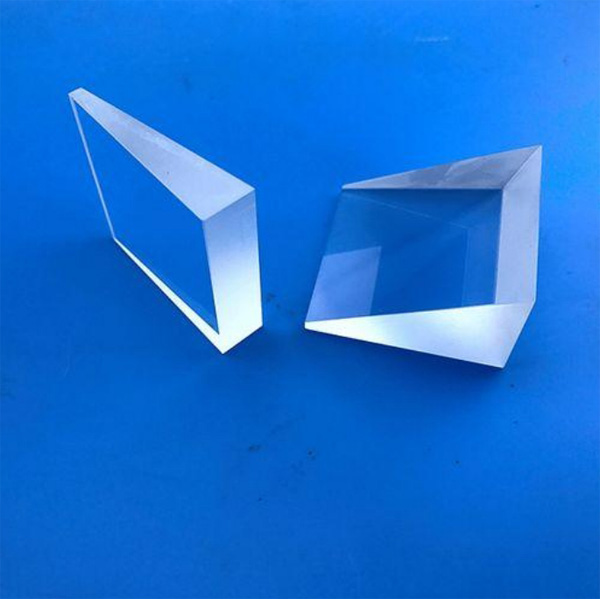Wedge prism is a common optical device and has a wide range of applications. It can disperse the incoming light into different wavelengths and separate out the light with different wavelengths. The skillful use of wedge prism has been widely used not only in scientific research, medicine, industrial manufacturing and other fields.
Wedge prisms generally consist of three bonded triangles. Two of the triangles form a right Angle and the third becomes a bevel. The Angle between the third triangle and the triangle in the right Angle becomes an edge. The working principle of the wedge prism is based on the phenomenon of refraction. When light passes through the prism, it bends at the center of refraction, which causes a change in wavelength that separates the light rays. Wedge prisms can separate out the colors of light, which helps in spectral analysis and other optical applications.

The use of wedge prisms varies according to the specific experiment or application. However, there are some basic steps that can help users get the most out of their functionality. Step 1: Understand the law of Refraction Before using a wedge prism, first understand the law ofrefraction. This law specifies the change in direction of light as it passes through different media. In a wedge prism, when light passes through an inclined plane, it leans toward its thick side. Step 2: Adjust the wedge prism When equipped with a wedge prism, it is necessary to align the side of the thick edge to the light source. Balancing light requires adjustments at both the thick and thin ends to ensure maximum separation and minimum scattering of light. Step 3: Adjust the Angle of light In order to maintain the normal separation of light, the wedge prism needs to work within the appropriate Angle. In the experiment, the center point is used whenever possible to ensure that the light enters the bevel correctly. Step 4: Select the appropriate prism Different wedge prisms have different roles. According to the specific requirements of the experiment, the appropriate prism is selected to improve the accuracy and efficiency of the experiment.
1. Analyze the composition of light. When the wedge prism enters the light source, all colors in the white light are separated. With certain techniques, this method can be used to analyze the composition of light.
2. Industrial manufacturing Wedge prisms are widely used in industrial manufacturing and can be used to measure humidity, liquid level and concentration. In addition, wedge prisms are used to measure refractive index and Angle to determine the degree to which a material is illuminated or bent. They can also be used to make optical instruments and meters.
3. medical wedge prism in the medical field has a variety of uses. For example, lenses and prisms can magnify and Orient vectors. A wedge prism can be used to direct light during surgery to achieve precise surgical results.
Wedge prism has a very broad and important application value, and every laboratory needs sufficient applications. The use of wedge prisms requires the mastery of basic optical principles and operational skills, which can be applied to different scientific research, medical and industrial fields, and play an irreplaceable role in improving experimental efficiency and accuracy.